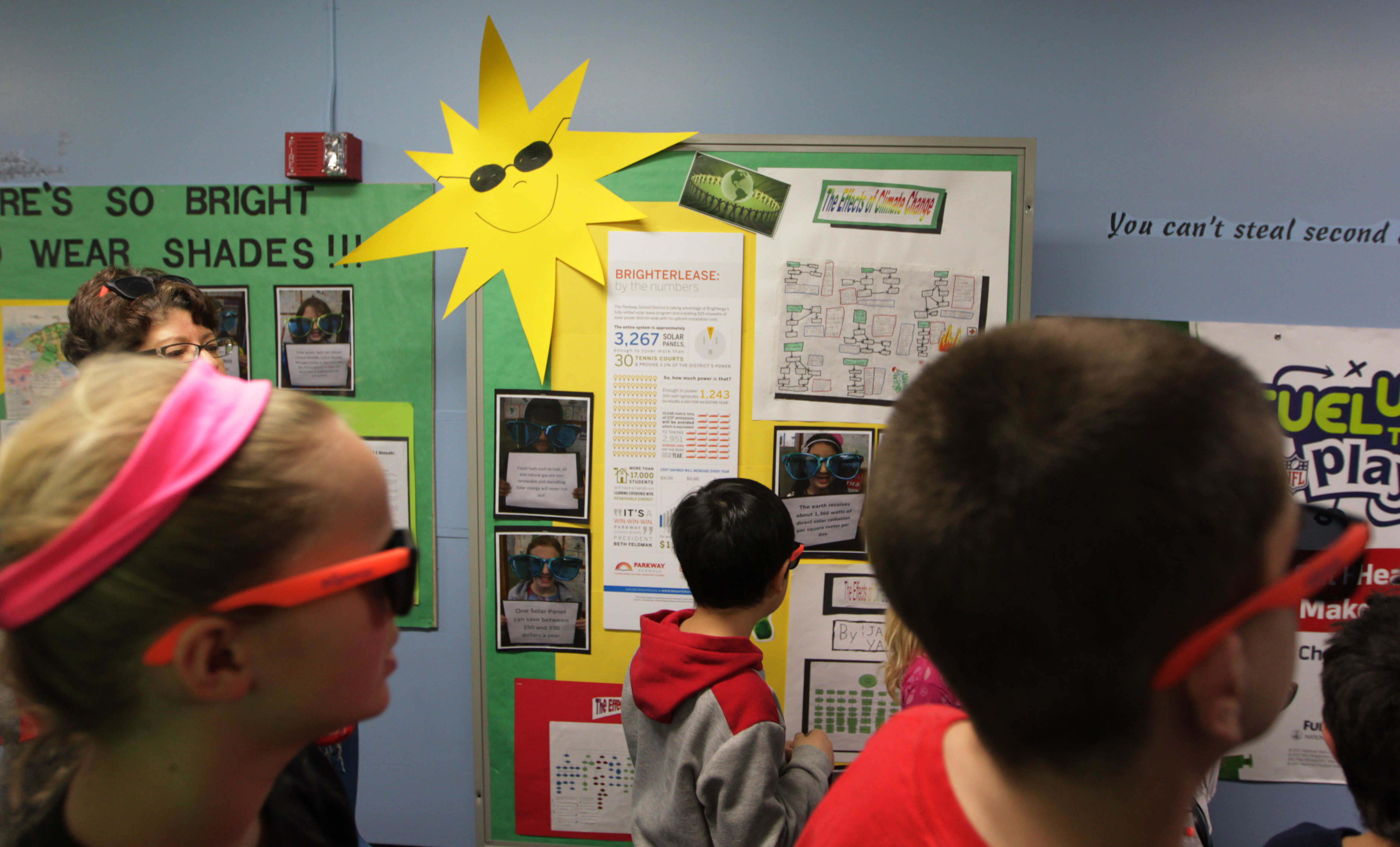
The scene at Pierremont Elementary in Manchester, Missouri yesterday was one of bubbling excitement, as students and teachers – in orange and black shades – rushed down the hallway to the gym, which was brightly decked out in sun-inspired artwork. They were the hosts for the Parkway School District’s Solar Dedication Event, a celebration of the completion of the district’s 825-kilowatt solar-energy system, installed as 25-kilowatt systems on 33 buildings district-wide.
They were also premiering their online monitoring system that will give each school access to the data from their solar-energy system via the school intranet.
“We’re very excited about this solar project,” said district superintendent Keith Marty. “Not only will it save money and help the environment, but our students will benefit in the classroom as well.”
As we’ve talked about before, solar energy and schools pair perfectly together. Putting solar panels on schools creates ready-made, hands-on learning opportunities for the classroom, turning previously unused roofs into scientific labs and inspiration for student art, writing, and other projects.
BrighterClassroom: Incorporating Solar Energy for Schools
Which is exactly why we’ve worked to create an accredited curriculum that maps out these unique opportunities for schools and teachers, with our BrighterClassroom™ program. Here’s how it works:
- BrighterClassroom™: The installation of solar panels at your school or district creates a unique opportunity for hands-on learning about energy and the environment. Brighter offers BrighterClassroom™ – a program that consists of professional development workshops, classroom lessons, and a service-learning project, all correlated to Missouri State Standards.
- ACTIVITIES: Activities focus on the importance of energy forms and sources, understanding energy conservation and efficiency, the value of renewable energy – specifically solar energy, energy in meeting current and future needs, and solar-energy technologies.
- CURRICULUM INTEGRATION: The program targets a school’s existing math and/or science curriculum to provide additional supplemental material and instruction about energy forms and sources. Special emphasis is placed on photovoltaic technology as the students utilize their own school building as a learning lab and their school’s solar-panel array as a hands-on visual tool for research.
- ACCREDITATION: The BrighterClassroom™ program was developed in conjunction with the EarthWays Center (EWC), a division of the Missouri Botanical Garden. EWC has delivered energy and recycling education in area K-12 schools since 1988; staff and programs have been recognized regionally for educational leadership.
- SOLAR SHINGLES: Solar shingles are a relatively new technology that is designed to resemble ordinary solar cells while also functioning as conventional roofing materials. They not only serve as roofs, but they also generate electricity through the conversion of solar energy. This solar shingle technology may assist schoolchildren in distinguishing between solar shingles and solar panels. The primary reason people prefer solar shingles over solar panels is aesthetics. Solar shingles have the appearance of a traditional roof, which some people prefer over a roof-mounted solar panel. It is installed on a mounting system that is typically elevated off the roof surface. This type of installation may provide students with a practical learning experience with how a solar panel and solar shingle work.
We really liked the presentations and art creations that Pierremont students created for their Dedication Event.




How would you incorporate solar energy into your classroom? What kind of projects would you have your students create?